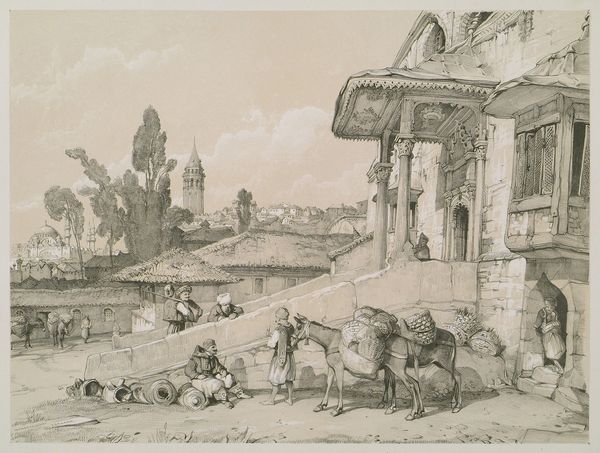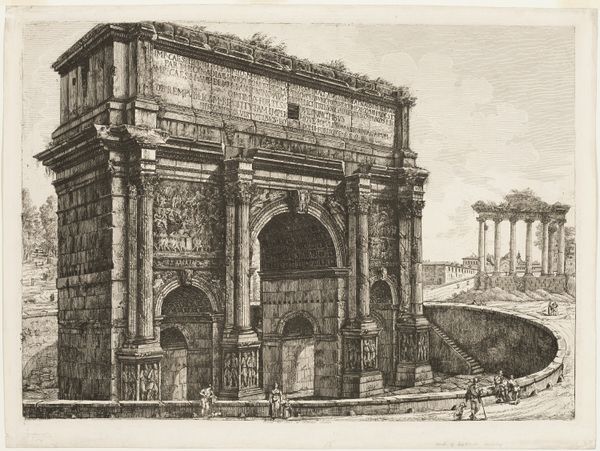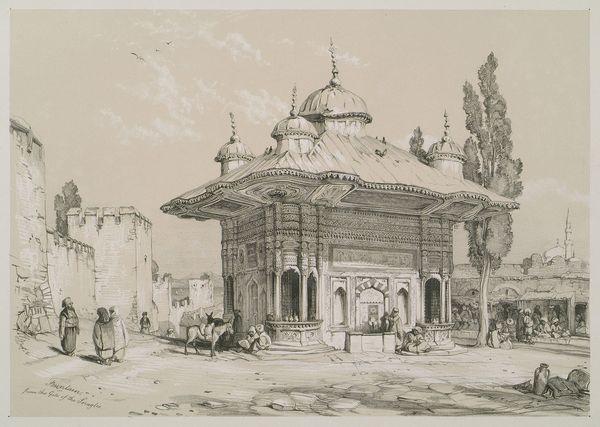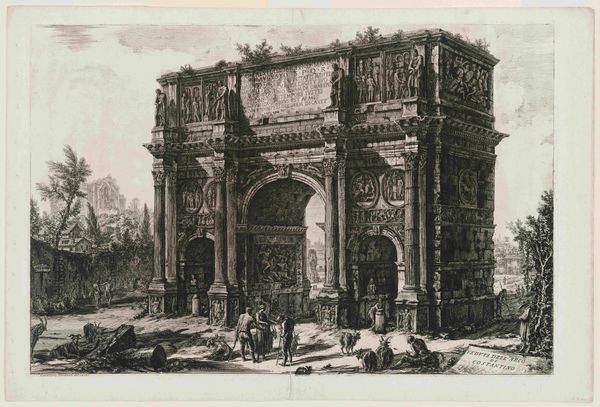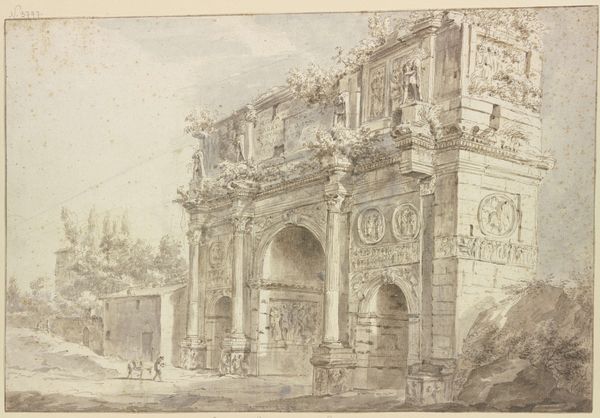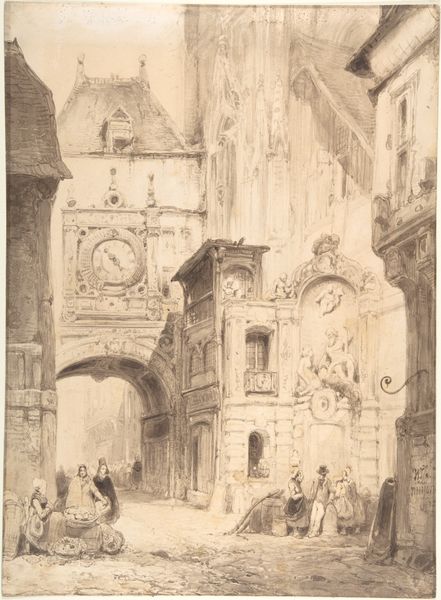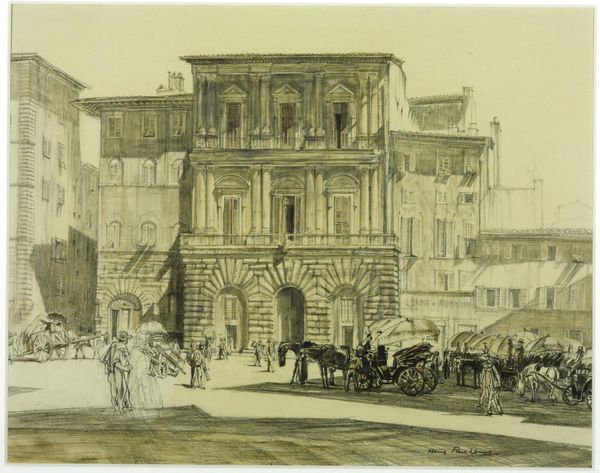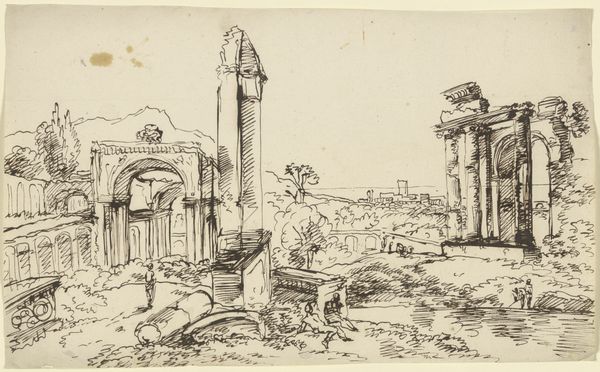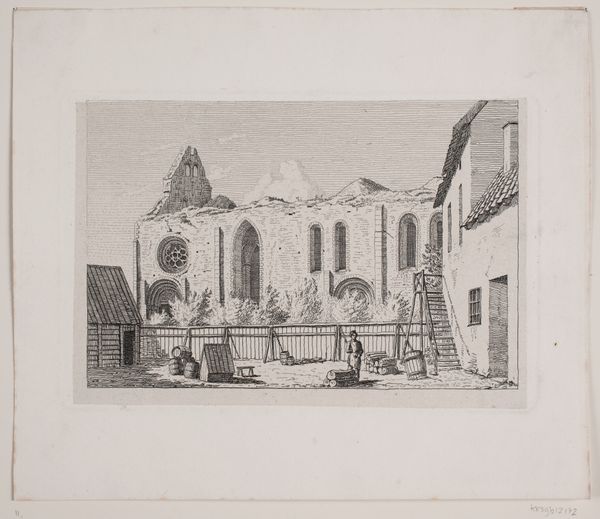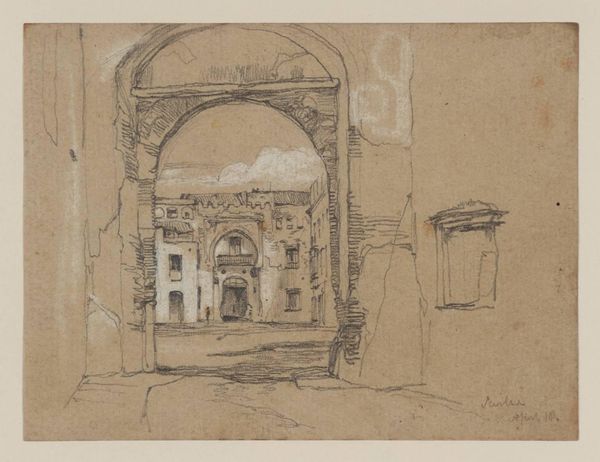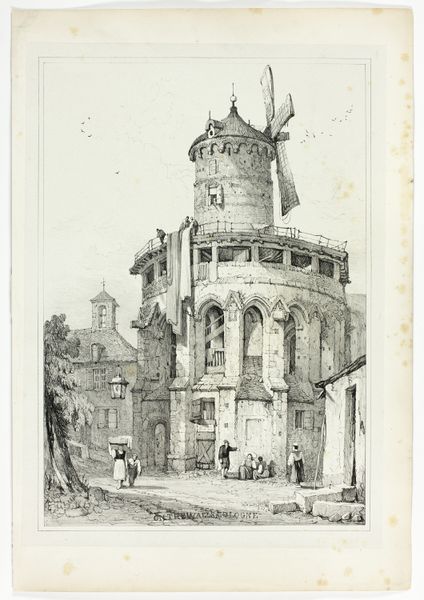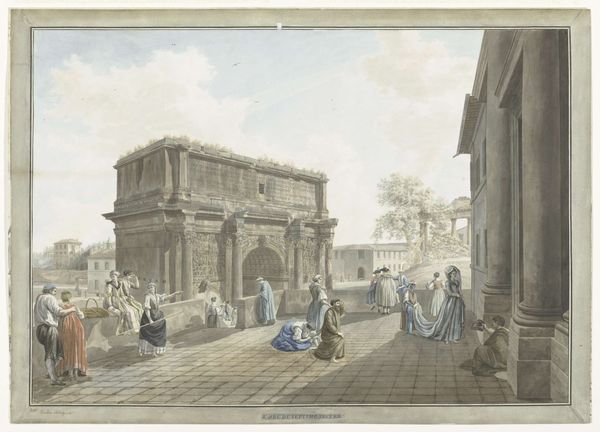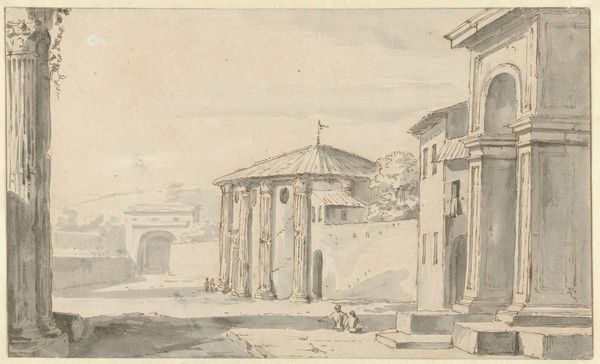
drawing, pencil
#
drawing
#
byzantine-art
#
pencil sketch
#
landscape
#
charcoal drawing
#
romanticism
#
pencil
#
orientalism
#
cityscape
Copyright: Public domain
Editor: Here we have John Frederick Lewis’s "Gate of the Mosque of Saint Sophia," created in 1838. It’s a pencil drawing and there's such detail! The way the architecture is rendered makes it seem so tangible. What's your take on this artwork? Curator: As a materialist, I am struck by how the very act of *drawing* here – the labor involved, the direct application of pencil to paper – is central to the Orientalist project of the 19th century. Lewis’s meticulous technique isn't just about rendering a scene; it’s about claiming knowledge, about possessing this place through detailed visual capture. Editor: Claiming knowledge? That's an interesting perspective. How so? Curator: The drawing meticulously catalogues the architectural details – the Byzantine influence, the textures of the stone. This act of recording transforms the foreign into the familiar, commodifying a distant culture for Western consumption. Notice also the subtle implications of leisure. The figures in the foreground are clearly not engaged in productive labor. Who were the patrons that consumed Lewis' work? What narratives were circulated, and reinforced, by this careful process of documentation and dissemination? Editor: I see what you mean. It’s not just about depicting the scene, it’s about who gets to depict it, who benefits from it. Were these drawings popular at the time? Curator: Absolutely. These drawings catered to a growing European interest in the “Orient”, fuelled by colonial expansion and exoticism. Consider the social context: burgeoning print culture, increased travel, and the rise of illustrated magazines, all facilitating the distribution and consumption of such images. Lewis's detailed drawings become commodities within this larger system. Editor: So, beyond the visual, it's about the industry and culture surrounding its production and reception. I hadn't considered that angle before. Curator: Precisely. The very materiality of the drawing – pencil on paper – connects it to larger questions of cultural exchange, labor, and the economics of representation. Editor: Thank you. Looking at it this way gives the piece a whole new dimension. It definitely puts the focus on the role of the artwork as a product of its time and a reflection of larger social trends.
Comments
No comments
Be the first to comment and join the conversation on the ultimate creative platform.
